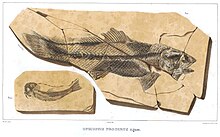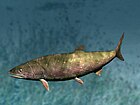
Carcharodon is a genus of sharks within the family Lamnidae, colloquially called the "white sharks." The only extant member is the great white shark. The extant species was preceded by a number of fossil (extinct) species including C. hubbelli and C. hastalis. The first appearance of the genus may have been as early as the Early Miocene or Late Oligocene. Carcharocles megalodon is still argued by some paleontologists to be a close relative of Carcharodon carcharias - as well as being in the same genus. The megalodon's scientific name was originally "Carcharodon" megalodon, but more recently, the giant shark has been assigned by most scientists to either the genus Carcharocles or Otodus.

Palaeoniscum is an extinct genus of ray-finned fish from the Permian period (Guadalupian-Lopingian) of England, Germany, Turkey, North America and Greenland, and possibly other regions. The genus was named Palaeoniscum in 1818 by Henri Marie Ducrotay de Blainville, but was later misspelled as Palaeoniscus by Blainville and other authors. Palaeoniscum belongs to the family Palaeoniscidae.
Gyrosteus is an extinct genus of very large ray-finned fish belonging to the family Chondrosteidae. It comprises the type species, Gyrosteus mirabilis, which lived during the early Toarcian in what is now northern Europe. A possible second species, "Gyrosteus" subdeltoideus, is known from otoliths.
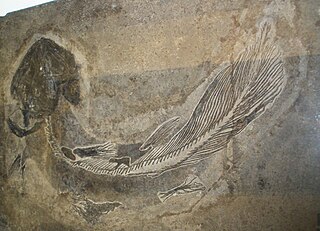
Coelacanthus is a genus of extinct marine coelacanths known from the late Permian period. It was the first genus of coelacanths described, about a century before the discovery of the extant coelacanth Latimeria. The order Coelacanthiformes is named after it.
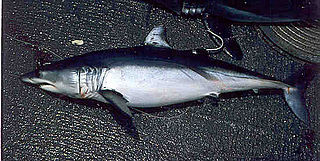
Isurus is a genus of mackerel sharks in the family Lamnidae, commonly known as the mako sharks. They are largely pelagic, and are fast, predatory fish capable of swimming at speeds of up to 50 km/h (31 mph).

Megalichthys is a genus of prehistoric lobe-finned fish which lived during the Devonian and Carboniferous periods. It is the type genus of the family Megalichthyidae. The type species is M. hibberti. The species M. mullisoni, named for fossil preparator C Frederick Mullison, is known from the Catskill Formation of Pennsylvania.

Acrotemnus is an extinct genus of marine pycnodontid ray-finned fish from various areas of the Tethys Sea that lived during the Turonian stage of the Upper Cretaceous. The genus comprises three species A. faba, A. streckeri, and A. megafrendodon.

Paracentrophorus is an extinct genus of prehistoric ray-finned fish that lived during the Induan age of the Early Triassic epoch in what is now Madagascar. The type species is Paracentrophorus madagascariensis (monotypy).

Ptychoceratodus is an extinct genus of lungfish living from Early Triassic to Middle Jurassic. It was established by Otto Jaekel for one species, transferred from Ceratodus genus. Type species is P. serratus from the Middle Triassic of Switzerland and Germany. Ptychoceratodus had two pairs of massive dental plates, bearing 4-6 acute ridges. Its skull roof was composed from massive, plate-like bones. In the central part of skull roof was localized an unossified fenestra. Most of the Ptychoceratodus findings are isolated dental plates, some associated with jaws. Other parts of skull or postcranial skeleton are relatively rarely found as fossils. The anatomy of skull is the best recognized in P. serratus, whereas less complete cranial material is available also for P. concinuus, P. phillipsi, and P. rectangulus. Although Ptychoceratodus is known exclusively from the Triassic and Jurassic, there were also Cretaceous specimens referred to this genus. However, they are more often regarded as representants of Metaceratodus. Ptychoceratodus is the only member of the family Ptychoceratodontidae. The first named species is P. phillipsi by Louis Agassiz in 1837 as a species of Ceratodus and later moved to Ptychoceratodus genus. Occurrences of Ptychoceratodus come mainly from Europe. However, occurrences from other continents suggest it was dispersed globally during the Triassic. After 2010, the new fossil material behind the Europe was reported from South America, India, and Greenland

Porolepis is an extinct genus of porolepiform sarcopterygian fish, from the Early Devonian Dniester Series of Ukraine, which is rich in Porolepis remains, and also the Nellen Koepfchen Beds of Germany. It lived alongside the dubious lophotrochozoan Macrodontophion. It was first described in 1858 but Porolepis was not named as a sufficient species until 1891.
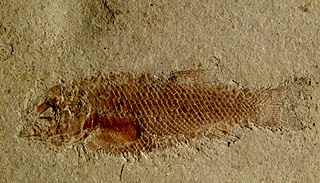
Acentrophorus is an extinct genus of prehistoric freshwater and marine ray-finned fish from the Roadian to the Wuchiapingian of England, Germany (Kupferschiefer), Italy and Russia. There may also be a Triassic occurrence in Australia.

Brannerion is an extinct genus of prehistoric marine bonefish. Fossils of the genus were found in the Romualdo Formation of the Santana Group, Araripe Basin, northeastern Brazil. It is considered a basal member of the Albuliformes.

Ctenothrissa is a prehistoric genus of marine ray-finned fish in the order Ctenothrissiformes. It contains a number of species known from the Late Cretaceous of England and Lebanon.

Coccolepis is an extinct genus of prehistoric marine ray-finned fish in the family Coccolepididae. Originally including most species within the family, it is now restricted to two species from the Late Jurassic Solnhofen Limestone of Germany. The holotype of C. bucklandi, designated and described by Louis Agassiz, was thought to be lost but was later rediscovered in Neuchâtel.
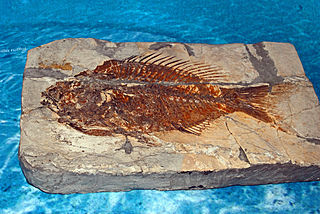
Sparnodus is an extinct genus of prehistoric perciform fish in the family Sparidae. Species of this genus were nektonic carnivores. These fishes lived in the Cenozoic Era, in the Oligocene and Paleocene.
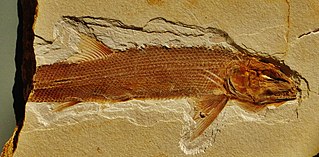
Ophiopsis is an extinct genus of prehistoric ray-finned fish belonging to the family Ophiopsidae. Specimens are known from the Tithonian-age Solnhofen Formation of Bavaria, Germany.

Cretalamna is a genus of extinct otodontid shark that lived from the latest Early Cretaceous to Eocene epoch. It is considered by many to be the ancestor of the largest sharks to have ever lived, such as Otodus angustidens, Otodus chubutensis, and Otodus megalodon.
Palaeospinax is an extinct genus of synechodontiform cartilaginous fish. Although several species have been described, the genus is considered nomen dubium because the type-specimen of the type species, Palaeospinax priscus, from the Late Triassic-Early Jurassic of Europe lacks appropriate diagnostic characters to define the genus.

Serratolamna is an extinct genus of mackerel sharks that is placed in the monotypic family Serratolamnidae.
Furo is an extinct genus of ray-finned fish belonging to the order Ioniscopiformes that has been found in Europe. The type species is F. orthostomus.
